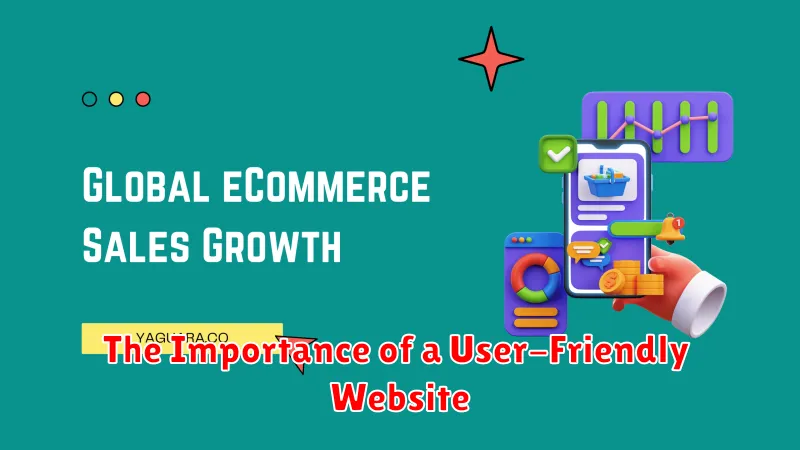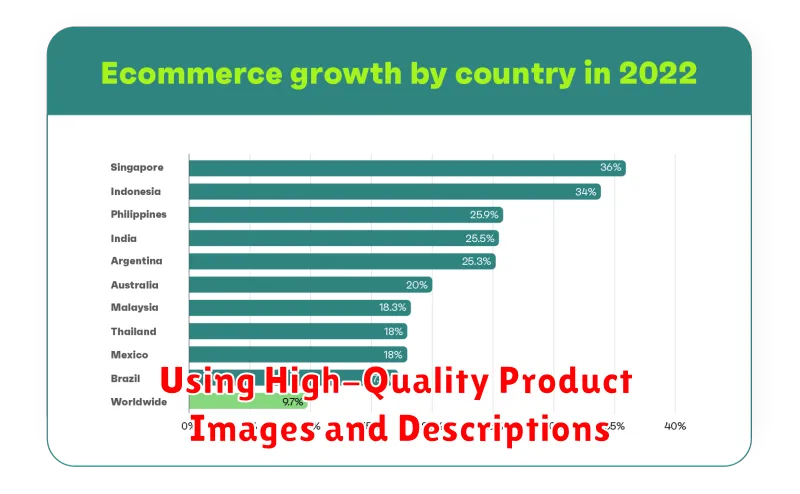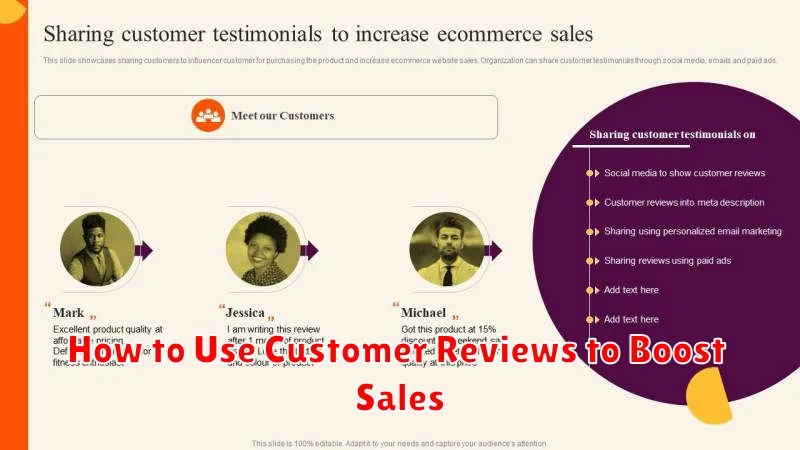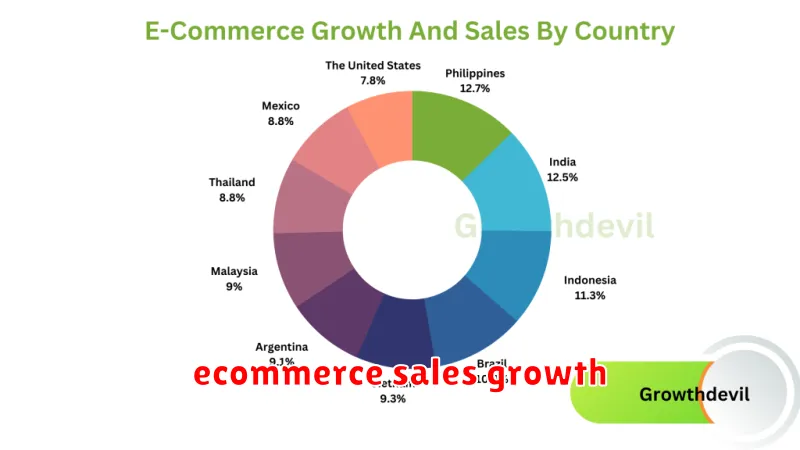Are you ready to significantly boost your online store’s sales? This comprehensive guide on How to Optimize Your Online Store for More Sales will equip you with actionable strategies to increase conversions and drive revenue. Learn how to improve your website design, enhance your SEO, leverage targeted marketing campaigns, and optimize your checkout process for a seamless customer experience. Discover the secrets to maximizing your e-commerce potential and achieving unprecedented growth.
The Importance of a User-Friendly Website

A user-friendly website is paramount for boosting online sales. Intuitive navigation, clear product information, and a seamless checkout process are crucial for a positive customer experience.
Frustration stemming from a poorly designed website leads to abandoned carts and lost sales. Conversely, a website that is easy to navigate and understand encourages browsing and purchasing. Easy-to-find products, high-quality images, and detailed descriptions all contribute to a satisfying user experience.
Mobile responsiveness is also critical. A significant portion of online shopping happens on mobile devices. If your website isn’t optimized for mobile, you’re losing potential customers. A fast loading speed further enhances the user experience, ensuring visitors don’t abandon your site due to slow performance.
Investing in a user-friendly website design is not an expense, but rather a strategic investment that directly impacts your bottom line. A positive user experience leads to increased sales, customer loyalty, and a stronger online presence.
How to Improve Website Speed and Performance
A fast-loading website is crucial for online sales. Slow websites lead to high bounce rates and lost revenue. Optimizing your online store’s speed directly impacts your bottom line.
Optimize images: Compress images without sacrificing quality. Use appropriate formats like WebP for better compression.
Minimize HTTP requests: Reduce the number of elements on a page that require separate downloads. Combine CSS and JavaScript files where possible.
Leverage browser caching: Enable browser caching to store static assets locally, reducing loading times for repeat visitors.
Use a Content Delivery Network (CDN): A CDN distributes your website’s content across multiple servers globally, ensuring faster loading times for users in different locations.
Choose a reliable web host: Your hosting provider plays a significant role in website speed. Select a provider with robust infrastructure and excellent performance.
Minify CSS and JavaScript: Remove unnecessary characters from your code to reduce file sizes and improve loading times.
Enable Gzip compression: This compresses data sent to the browser, resulting in faster downloads.
Regularly monitor your website’s performance: Use tools to track your website’s speed and identify areas for improvement. Consistent monitoring is key to maintaining optimal performance.
Using High-Quality Product Images and Descriptions

High-quality product images are crucial for boosting online sales. Customers need to see your products clearly and in detail. Use professional, well-lit photos that showcase your products from multiple angles. Consider lifestyle shots showing the product in use, to help customers envision themselves using it.
Compelling product descriptions are just as important as images. Go beyond basic specifications; highlight key features and benefits. Use persuasive language that speaks to your target audience’s needs and desires. Address potential customer concerns and objections directly. Include relevant keywords for improved search engine optimization (SEO).
The combination of high-quality images and detailed descriptions creates a trustworthy and engaging online shopping experience. This leads to increased customer confidence and ultimately higher conversion rates. Invest time and resources in creating exceptional product visuals and copy to maximize your sales potential.
Creating a Seamless Checkout Process
A streamlined checkout process is crucial for boosting online sales. Frictionless navigation is key; avoid unnecessary steps or confusing layouts. Guest checkout options allow customers to purchase quickly without account creation. Clearly display pricing, taxes, and shipping costs upfront to avoid surprises.
Optimize for mobile devices. Ensure your checkout is responsive and easy to use on smartphones and tablets. Offer multiple secure payment gateways to cater to customer preferences. A visually appealing and intuitive checkout design enhances the user experience.
Progress indicators help customers track their order status. Clear call-to-actions guide them through each step efficiently. Post-checkout, send immediate order confirmation emails with tracking information. Regularly test and refine your checkout process to identify and address any bottlenecks.
By focusing on simplicity, security, and a user-friendly design, you can significantly improve conversion rates and drive more sales.
How to Use Customer Reviews to Boost Sales

Customer reviews are powerful tools for boosting sales. Positive reviews build trust and social proof, encouraging potential buyers to make a purchase. Showcase them prominently on your product pages and throughout your website.
Strategically display reviews. Highlight positive feedback, addressing any concerns with constructive responses to negative reviews. Consider using review snippets or star ratings for quick impact.
Encourage reviews. Make it easy for customers to leave reviews by providing clear prompts and streamlined processes. Offer incentives, like discounts or entry into a giveaway, to encourage participation.
Respond to reviews. Engage with customers by responding to both positive and negative reviews. Thank customers for their positive feedback and address concerns raised in negative reviews professionally and promptly. This shows that you value customer opinions and are committed to resolving issues.
Leverage reviews in your marketing. Use snippets of positive reviews in your advertising campaigns and social media posts. This provides social proof and builds credibility.
By effectively using customer reviews, you can significantly improve your online store’s credibility and drive sales.
Personalizing the Shopping Experience
Personalization is key to boosting online sales. By tailoring the shopping experience to individual customers, you significantly increase engagement and conversion rates. This involves leveraging data to understand customer preferences and behaviors.
Personalized recommendations are crucial. Use browsing history, purchase history, and even social media data to suggest relevant products. This demonstrates understanding and caters to individual needs, making customers feel valued.
Targeted email marketing plays a vital role. Segment your audience based on demographics, purchase behavior, or website activity, and send tailored emails with product recommendations, promotions, or exclusive offers. This ensures your messaging resonates with each recipient.
Dynamic content further enhances the personalized experience. This involves displaying content—such as product images, banners, or calls to action—that’s specific to each customer based on their profile or browsing history. This makes the website feel unique and relevant to each visitor.
Implementing these strategies requires robust data collection and analysis. Invest in tools that enable you to effectively track customer behavior and leverage the insights to deliver a personalized experience. The resulting increased engagement and customer loyalty translate directly into higher sales.
Implementing Live Chat and AI Support

Integrating live chat and AI-powered support into your online store significantly enhances customer experience and boosts sales. Live chat offers immediate assistance, addressing customer queries and concerns in real-time, leading to increased conversions and reduced cart abandonment.
AI chatbots provide 24/7 availability, handling routine inquiries and freeing up human agents to focus on more complex issues. This ensures prompt responses, even outside of business hours, enhancing customer satisfaction and building trust.
Choosing the right live chat platform and AI solution is crucial. Consider factors like ease of integration, scalability, customization options, and reporting capabilities. Proper training of your support team is equally important to ensure seamless integration and effective handling of customer interactions.
By strategically implementing live chat and AI support, you create a more efficient and customer-centric online store, directly contributing to increased sales and improved customer loyalty.
Retargeting and Remarketing Strategies for E-commerce
Retargeting and remarketing are crucial for boosting e-commerce sales. They involve showing ads to users who have previously interacted with your website but didn’t make a purchase. This helps recapture potential customers who may have forgotten about your products or are still considering their options.
Effective retargeting strategies focus on specific audience segments. For example, you might target users who viewed a particular product but abandoned their cart with ads showcasing that item and offering a discount or free shipping. This personalized approach increases conversion rates.
Remarketing campaigns often utilize different messaging than initial advertisements. Instead of focusing on broad brand awareness, they emphasize the benefits and value proposition of specific products or services, often reminding users of items they previously expressed interest in.
Choosing the right platform is key. Google Ads and Facebook Ads offer robust retargeting and remarketing capabilities, allowing you to tailor your campaigns based on demographics, browsing history, and purchase behavior. A/B testing different ad creatives and targeting parameters is crucial for optimization.
Measuring success is paramount. Track key metrics such as click-through rates (CTR), conversion rates, and return on ad spend (ROAS) to assess the effectiveness of your campaigns and make necessary adjustments. Regular analysis ensures you’re maximizing your investment.

